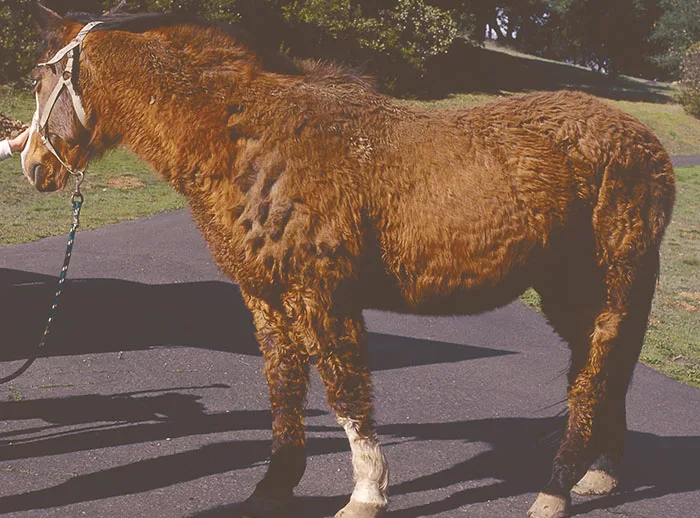American Farriers Journal
American Farriers Journal is the “hands-on” magazine for professional farriers, equine veterinarians and horse care product and service buyers.

SIGNS OF CUSHING’S SYNDROME. This horse displays the classic signs of Cushing’s syndrome. It’s obese, has a cresty neck and balls of fat on the rump and neck.
Like any farrier, Matthew Frederick has dealt with his share of laminitic horses.
What sets him apart is that Frederick has done more than just battle individual cases of the disease. Frederick and his wife, Susan Tierney Frederick, have developed a theory on the root cause of refractory laminitis. They have also developed a suggested course of treatment that could offer new hope for horses suffering from refractory laminitis that once had to be put down.
What’s more, while Frederick notes that his study was done on laminitis cases that were refractory — laminitis cases that do not respond to conventional or medical treatment of any kind — he believes the theory actually applies to most laminitic horses. His research caused a stir when it was presented at the Bluegrass Laminitis Symposium last year and continues to attract attention today.
The Fredericks hypothesize that — in effect — horses with refractory laminitis are diabetic. They believe that laminitic syndrome can be compared to the development of DM2-type diabetes in humans. Insulin resistance is a defining characteristic of DM2 diabetes, and they believe insulin resistance can be found in virtually all of the conditions usually believed to have caused laminitis.

SIGN OF LAMINITIS. This hoof shows sole bruising as well as stretched laminae. Frederick noticed that these signs were often present in horses he found had had “laminitic episodes” after senior supplements were added to their diets.
The Fredericks believe most laminitic horses share this common trait of…